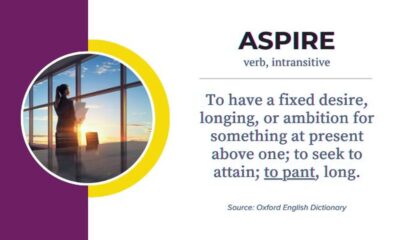What Are Google Web Stories? A Guide for Marketers

Back in February 2018, Google announced AMP stories.
This visually rich, mobile-focused content format felt similar to the “stories” functionality popular on many social media sites.
The underpinning technology is based on the accelerated mobile pages that have been somewhat controversial in the marketing world.
In May 2020, Google rebranded AMP Stories as Web Stories, which they explain are “a web-based version of the popular Story format, allowing creators to host and own their content.”
What Do Google Web Stories Do?
Google Web Stories are a visual content format that can be shown across the internet.
You might find them similar to the stories on Instagram in that they allow creators to publish a succession of images, videos, and audio.
Web Stories are billed by Google as being “fully immersive” thanks to their ability to be viewed full-screen.
Some examples of Google Web Stories being used by brands currently include:
Where Do Web Stories Appear?
One thing that makes Google Web Stories fairly unique amongst the myriad of story-telling functionality found in apps is their ability to be seen across the web.
On Your Website
Whereas the likes of Instagram Stories need to be viewed on that platform, Google’s Web Stories can be hosted on a creator’s own website.
This gives publishers more freedom over what is contained in the story as there are no restrictions around content, unlike many apps.
It also means the story can be used to help to drive traffic to your site, not kept within the walled garden of social media apps.
In the Search Results
One of the main benefits of using Google’s stories above other competitors’ social media story format is their accessibility from the SERPs.
Google Web Stories can be indexed like a web page and served as a Google search result.
In Google Discover
In October 2020, Google announced that they were bringing Web Stories to Google Discover feeds in India, Brazil and the US.
The list of stories, called a “shelf” by Google, sits at the top of Discover.
Tapping on the story brings it to full-screen and allows the user to navigate through the list by swiping.
In Your Online Publications
Because Web Stories are hosted on your own servers it means the content can be used across other digital assets, too, like emails and digital brochures.
On Multiple Devices
Although the AMP technology the web stories is based on is designed for use on mobile devices, web stories can be viewed on mobile, tablet, and desktop browsers.
This increases their utility as there is no need to create desktop-friendly alternatives for responsive assets like websites.
How Do You Create Google Web Stories?
Google is taking publishers by the hand and leading them through the creation of Web Stories.
There are several tools to help put them together and even comprehensive development notes for those who want to think more outside-the-box.
Web Stories Basics
At their core, Google Web Stories are built using the Accelerated Mobile Pages format.
In fact, when you click on the link to the “Developer docs” from Google’s stories website, you’re taken to the amp.dev guides and tutorials page.
Web Stories require HTML mark-up to be valid.
They also can support optional mark-up to enhance the user experience. For instance, it is possible to use HTML mark-up make the story accessible in landscape mode and present it in a more immersive way on desktop.
When creating your web story, you need to set the metadata attributes.
These do not serve as the page title or description of the story but as a preview of the story where it is served across the web.
You can also add a page title, description, Open Graph data, and other elements to optimize your story for search and sharing; this is done through traditional HTML mark-up.
Google’s AMP Test tool will help you to identify if there are any errors with your story.
If your page cannot be validated as a Web Story, there are links to documentation and guidance to help you to rectify the problems.
Third-Party Tools
Third-party tools can help you craft your Web Stories without needing a developer or design team on hand.
Two tools that Google links to from its Web Stories site are News Room AI and MakeStories – neither of which are run, or technically endorsed, by Google.
News Room AI gives creators a WYSIWYG (what you see is what you get) design functionality and a deal with Getty images that grants access to over 300 million images.
MakeStories boasts a zero-code, drag-and-drop functionality to customize your stories including access to Google fonts and “one-click filters” to edit your images.
WordPress Integration
Google has partnered with WordPress to create a plugin that allows publishers to create web stories directly on their WordPress site.
As the stories are built within the WordPress website, they will be included in the site’s XML sitemap allowing for easier discovery by Google.
The plugin also gives creators the ability to set their metadata for the story including cover image, excerpt, and logo.
Shopify Integration
ProductStories is an app that enables your Shopify pages to be converted into Web Stories.
Once the app is installed, an AMP version of each product page is automatically created.
A user can choose from two different themes or request a customized theme from the ProductStories team.
10 Benefits & Uses of Google Web Stories
The format, versatility, and ease of creating Google Web Stories make these a beneficial medium for marketers to explore.
Here are the top 10 benefits and uses of the format.
1. Under Your Control
As the stories can be hosted on a publisher’s own website, the copyright of the content is all theirs.
This means the topics they cover are entirely at their own discretion and without the strict limitations often seen in social media.
The use of the content is also at the publisher’s discretion; Google does not assume any rights over the content.
Google does have some restrictions on the content that can be published, most notable being the policy on content that is “overly commercial.”
It’s worth taking a look over the guidelines before creating your first story – especially if you are using it for promotional purposes.
2. Monetization
Any ads that appear in a Google Web Story are controlled by the content creator.
That means unlike with the story functionality on social media apps, monetization of the content is entirely at the discretion of the publisher.
Therefore, if you host ads on your web story, you get 100% of the ad revenue.
Google recently released a programmatic ads solution for Web Stories through Ad Manager and AdSense.
3. External Linking
A lot of social media sites with similar story formats dissuade content creators from linking out to other websites.
This usually means having to be creative in linking from the comments or bio.
With Google Web Stories, there are no such restrictions on linking out.
4. Supports Google Analytics for Tracking
As Web Stories act like web pages, they can be linked to analytics platforms including Google Analytics.
This means there is a much greater level of tracking and user analysis available than on standard social media story formats.
This is an integral part of assessing how valuable Web Stories are to your marketing strategy.
5. Stories are Responsive
Unlike AMP which is designed specifically for mobile devices, Web Stories can be responsive to any device type.
This means there is no need to create separate content for display on desktop devices or to suffer the loss of functionality on mobile.
6. Can Be Interactive
Web Stories include the ability to host interactive elements such as quizzes and polls.
This is somewhat limited by your technical ability, as this functionality isn’t supported by all Web Stories creation platforms.
Given the immersive nature of the Web Stories, this added level of interactivity could make for an engaging experience.
7. No Time Limit
Unlike some other Google content such as Google My Business posts, there is no expiration date on Web Stories.
They will not be deleted automatically after 7 days and won’t get lost in a timeline like on social media accounts.
You can feature your Web Story for as long and as prominently as you’d like.
8. Easily Indexed and Linked to
Web Stories are designed to be easily indexed by search engines.
This means getting your content onto the first page of Google won’t require any additional work on your part beyond the standard SEO needed to get any web page ranking well.
There is also the opportunity for it to appear in the coveted Web Stories carousel if you are publishing content for India, Brazil, or the United States.
9. Use Whatever Branding Style You Want
There are no design restrictions beyond making sure that Web Stories meet the general technical requirements.
This means you are free to choose fonts, colors, animations, and imagery that suits your brand’s style.
10. Live Stories
Using the “live-story” attribute on your Web Story will notify the user in real-time that you have added a new page.
This can be particularly useful if you are using the format to cover breaking news or developments.
Conclusion
Google Web Stories is a rich, engaging content format that boasts a lot of potential for marketers.
Unlike similar social media storytelling formats, Web Stories are not time-bound or limited to certain platforms.
The brand benefits of exposure via Google products including Search and Discover are worth exploring.
More Resources:


















